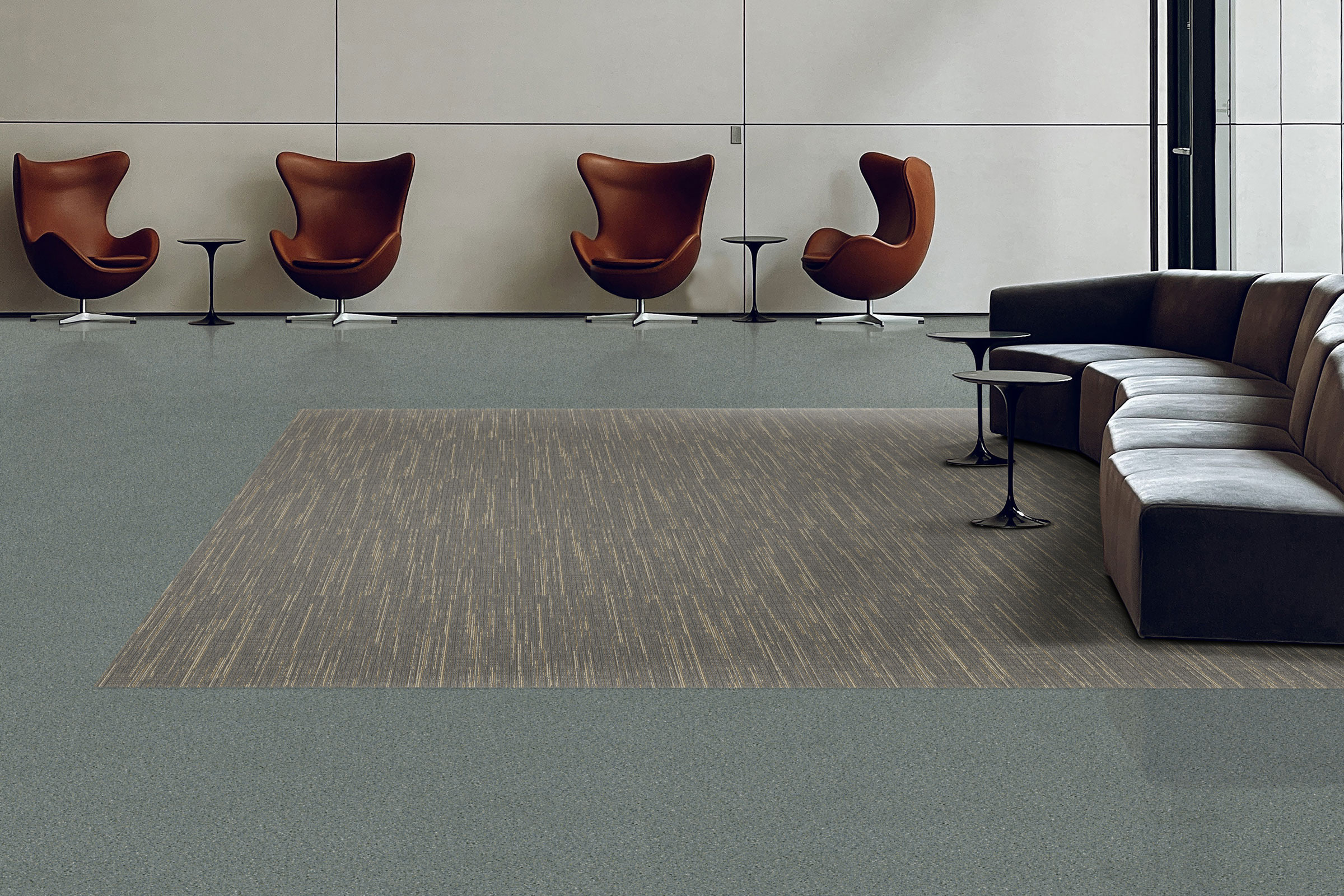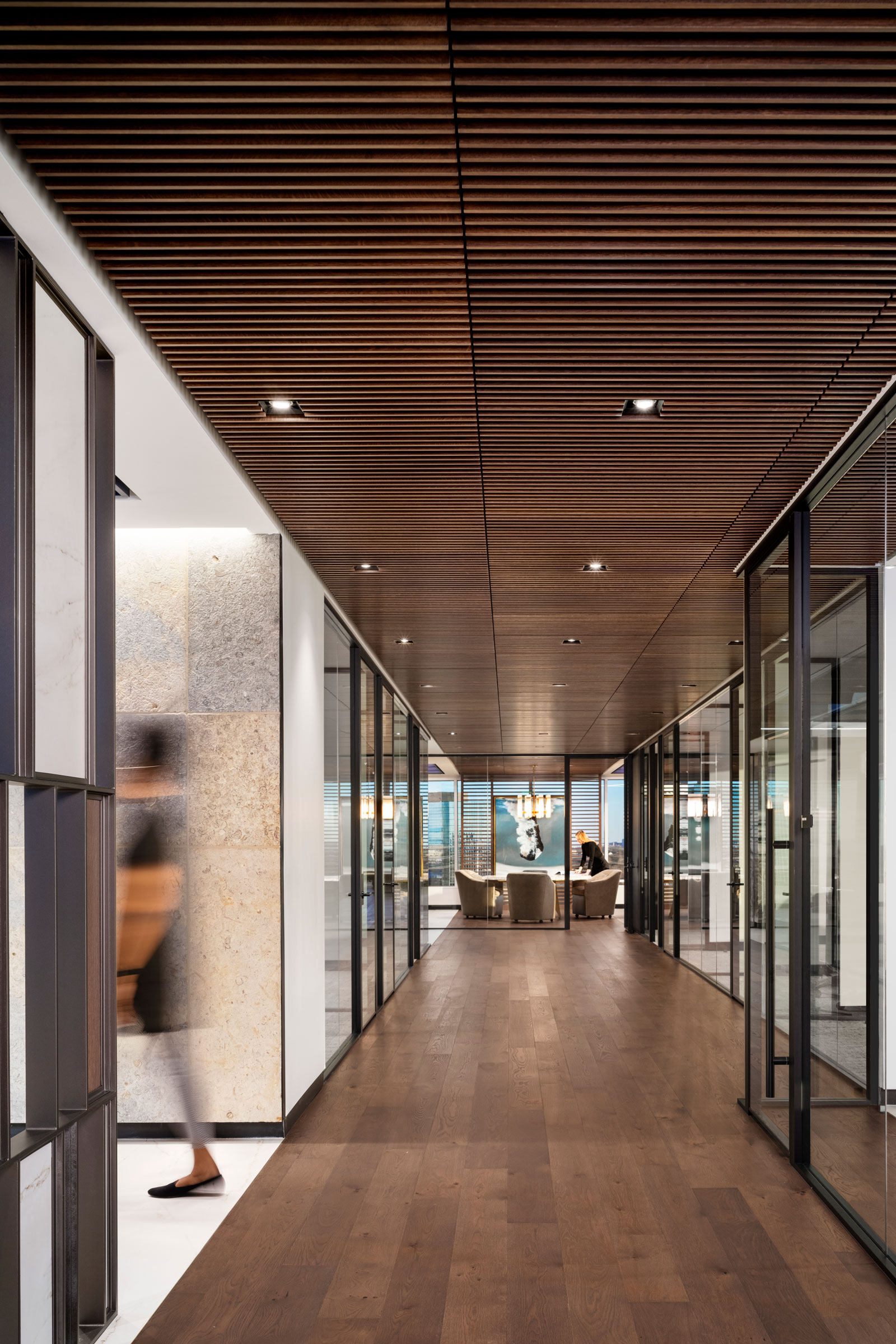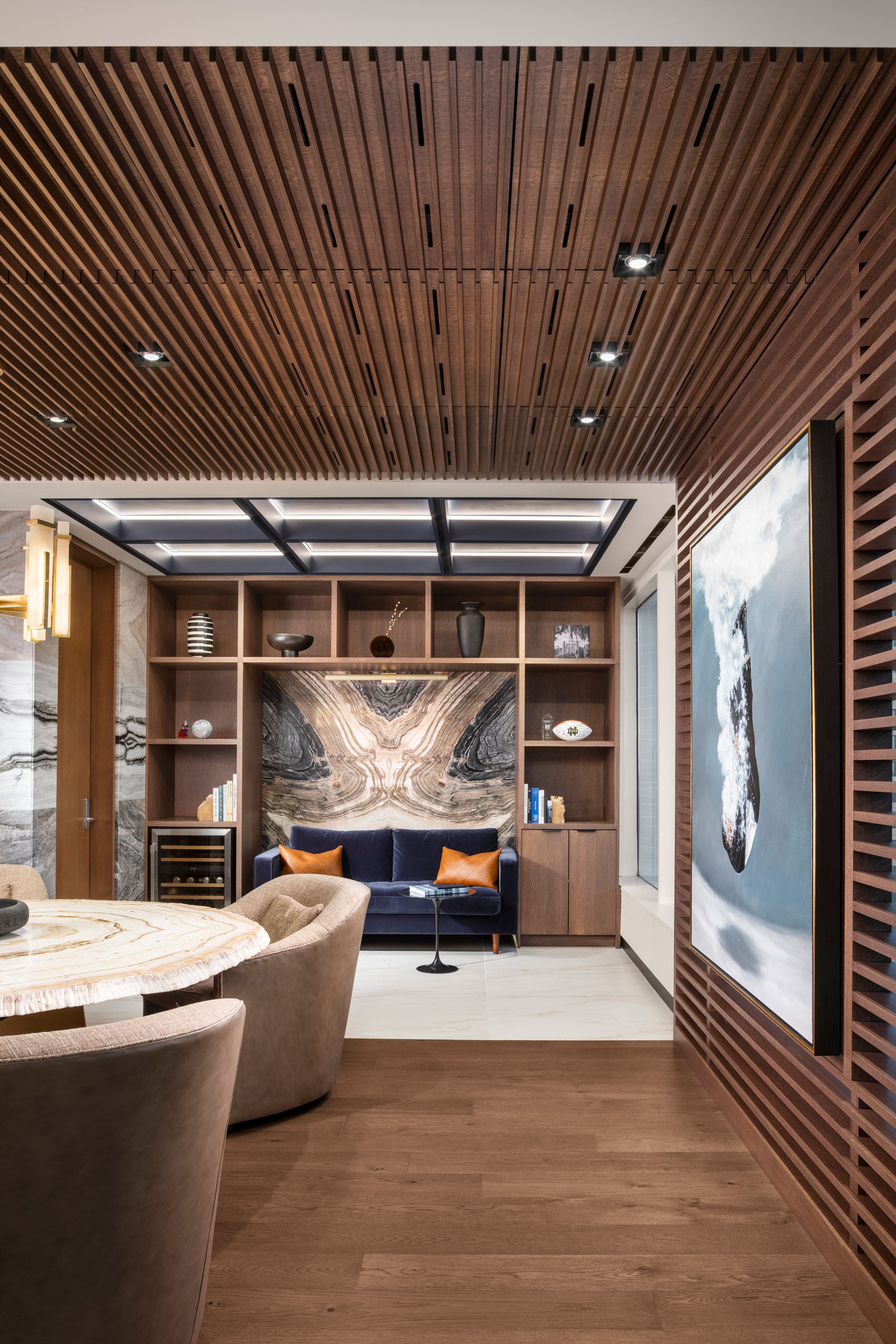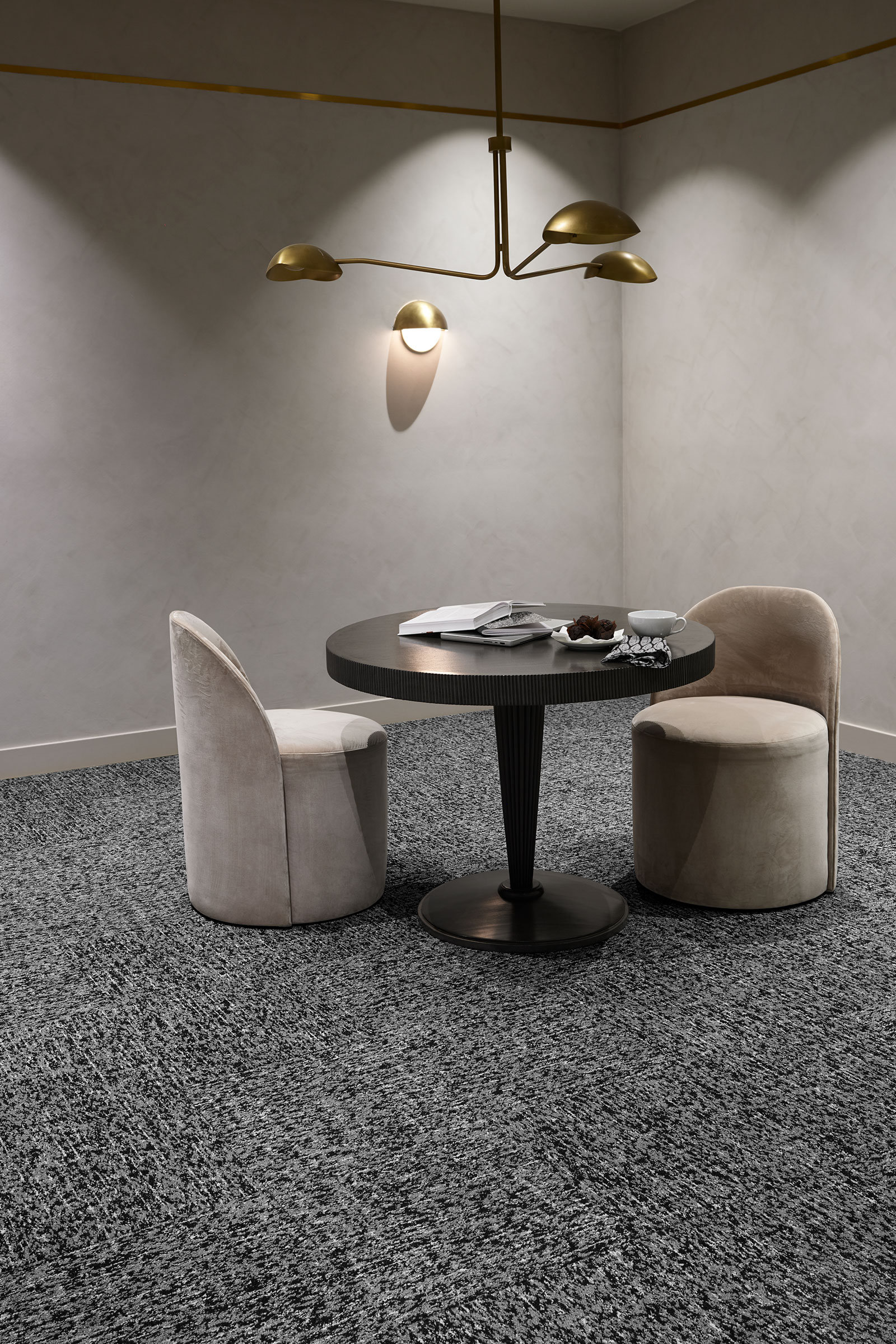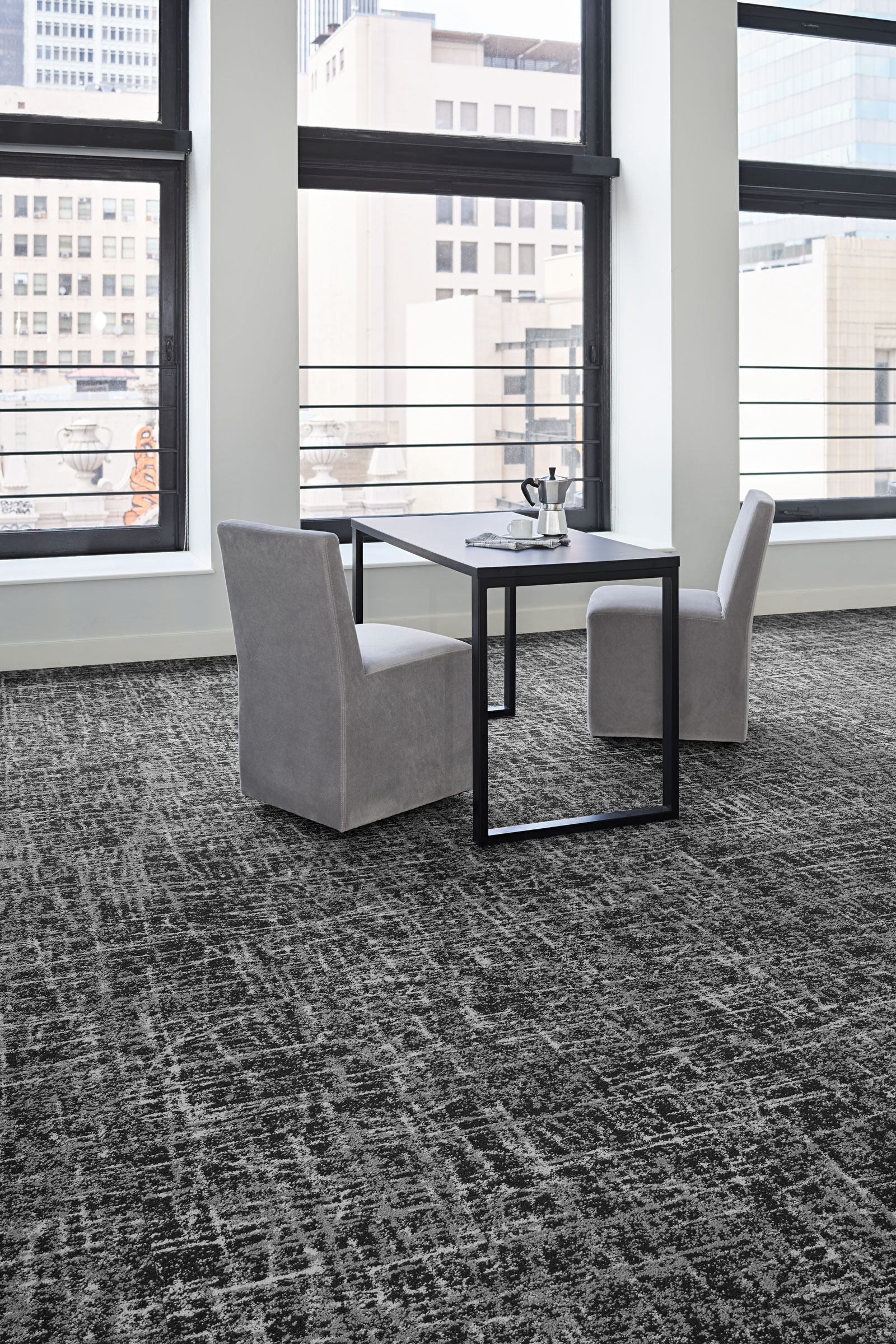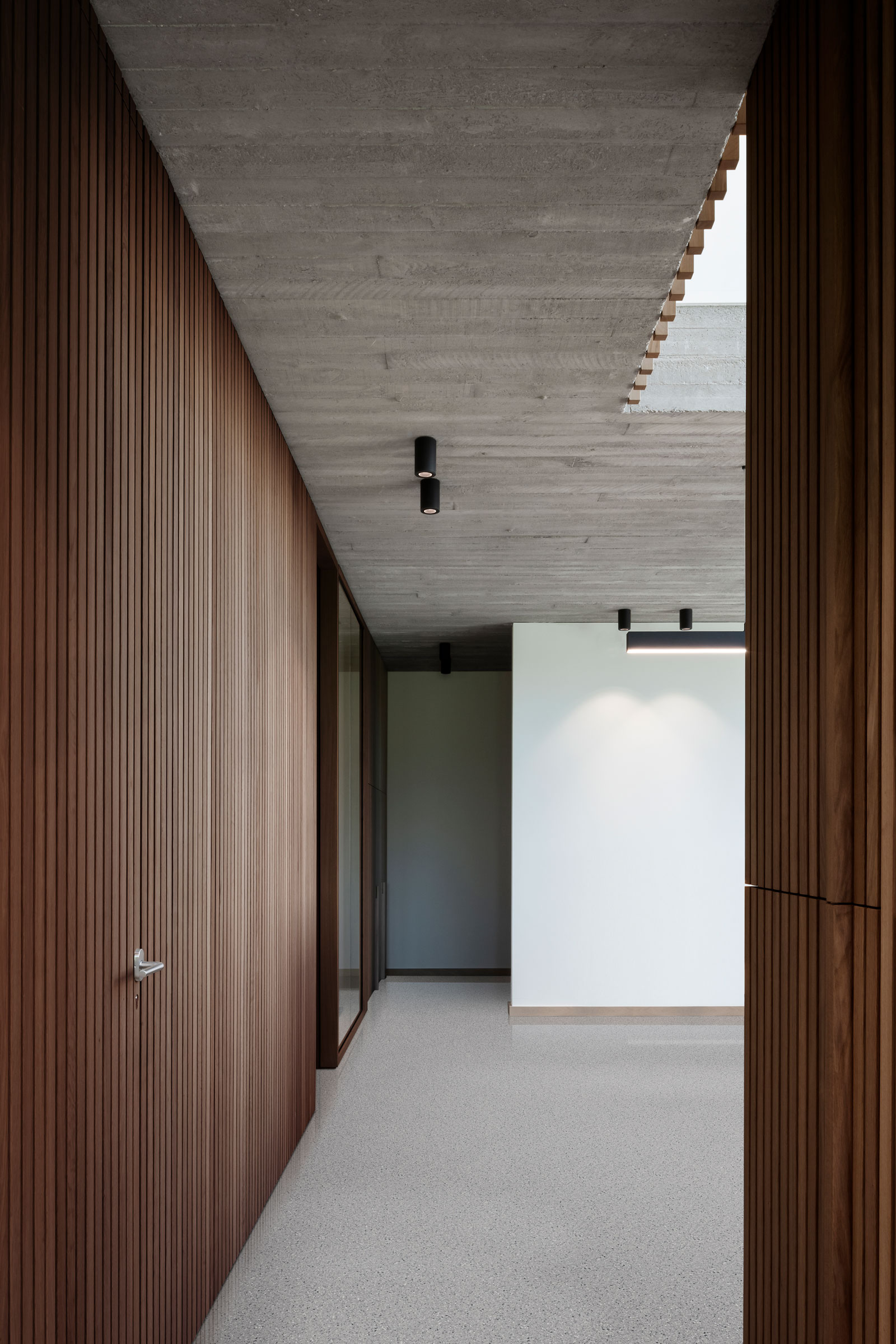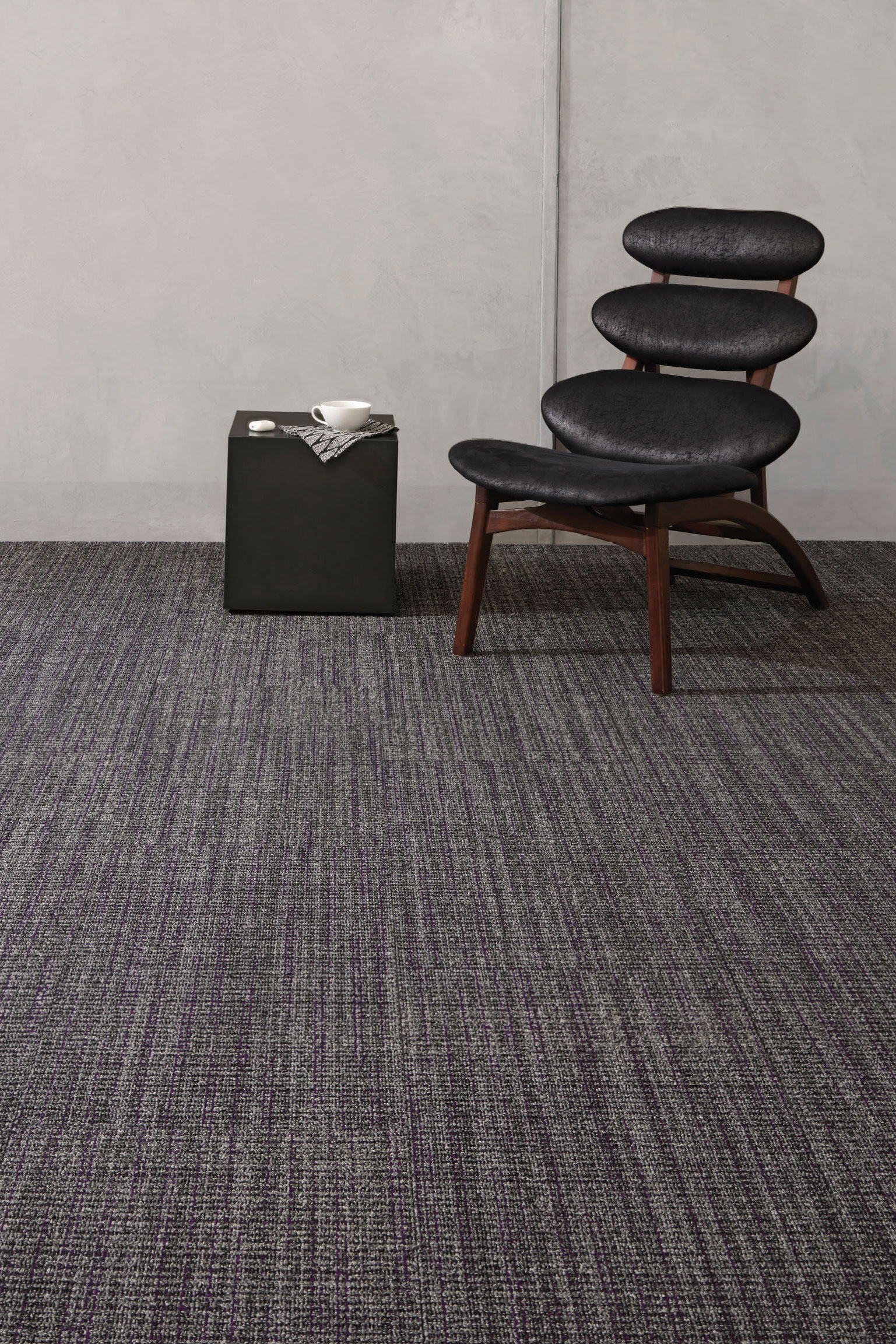Story at a glance:
- Flexible spaces and innovative flooring are among the latest demands for today’s office.
- Experts from Perkins&Will say businesses continue to want to make work feel more comfortable.
- Bentley Mills is one of the country’s top sustainable flooring manufacturers and recently unveiled its latest designs, including the Culinary Collection.
Stuffy, corporate-feeling environments are becoming a workplace relic, as even large companies known for their strict professionalism strive to make their workplaces feel cozier.
“The idea that an office space needs to feel corporate is changing, and that’s a good thing,” says Ariel Lumry, an interior project designer who’s been working with Perkins&Will for more than three years. “It’s scary for some people, but I think the challenge is exciting.”
While some of the country’s biggest companies have long been enticing workers with amenities like foosball and free snacks, today’s design needs are focused more on wellness and comfort, Lumry says.
At Home in the Office
- Architects today are looking for flooring options that make even the most professional spaces feel more like home, like the warmth seen here a Mohr Capital. Photo by Casey Dunn
- Perkins&Will completed a custom floor design for Mohr Capital in Dallas using varied materials repeated strategically to indicate different areas. Photo by Casey Dunn
Designs that feel equally at home, well, in your home or in a hotel are in demand in today’s workplace.
“There used to be a rigid line between designs for health care and corporate and hospitality and residential. Now we’re all borrowing and learning from each other,” Lumry says. “Hospitality, particularly post-pandemic, touches every element of what we do. People want to feel comfortable in their workplace. We have to give them the services and amenities they had at home.”
Hospitality, particularly post-pandemic, touches every element of what we do.
Lumry says a human-centric approach and emphasis on comfort that’s prevalent in hospitality design was missing in corporate interiors until recently. Today even law firms are more apt to incorporate flex spaces like mother’s rooms or areas where other services—say, massage therapy or a place to get your nails done—can be brought in so an attorney doesn’t have to leave the building.
Organic Approach

The design for Long Story Short is timeless and easy to match with virtually any other floor or interior material. Photo courtesy of Bentley
Color and style are part of what makes spaces more comfortable, Lumry says. Many offices also want more access to fresh air and nature views, and they want their interiors to feel light and airy. Perkins&Will is seeing a demand for more neutral tones that are easy to mix and match alongside biophilic designs. The notion of biophilia, too, is changing. It’s not just about greenery.
“Now you’re seeing these shapes and forms be extracted from nature and applied in innovative ways to things like flooring to truly have an impactful psychological effect on how you experience the space,” Lumry says. “It’s the softness and the curves and repetition of patterns that are natural in origin. We automatically relate to it without even realizing it.”
Architects and designers are loving the organic approach to flooring, too.
Calm, Comfortable Carpet & More
- As part of Bentley’s Culinary Collection the reserved, accessible style and pattern of Serve It Up reminds us to savor simplicity. Photo courtesy of Bentley
- Bentley’s Culinary Collection comes in three signature styles—On the Block (seen here), From Scratch, and Serve It Up. Photo courtesy of Bentley
There used to be a type of carpet you’d see in an office—bland, one tone, and wall to wall. “It was a very different look than what you would see at home or in a restaurant or in a hotel,” Lumry says. “That’s changing. I’m excited about this more organic approach to the design of carpet—everything from the physical design of it to the colorways. Things are a lot softer, and there are a lot more neutral tones. Everything has a fluid feel, which is fantastic. It allows the designers to be a lot more creative.”
When Perkins&Will looks for flooring, they’re looking just for that—a way to easily mix and match with complementary styles and colors. “I can go in and pull pieces out of a line and create something that looks very custom for my client,” Lumry says. “Part of our job is integrating the brand into a space in a really thoughtful way. When there’s more attention paid to a variety of colorways within different lines of carpet we can use that as a tool to integrate the brand into the design of the space in an elegant way.”
I’m excited about this more organic approach to the design of carpet.
Bentley Mills, one of the country’s top sustainable flooring manufacturers, knows all about designing complementary styles. They recently launched their Culinary Collection alongside hits like Long Story Short and the addition of Classic Rock to their LVT library. The launches come after some big changes for the company, who’s long been committed to the highest environmental standards, having recently moved to use new, more sustainable partners.
“We redesigned our whole library based on new yarn vendors, and that opened up a whole realm of possibilities,” says Victoria deVuono, vice president of product and marketing at Bentley Mills. Today Bentley works with leaders in sustainable fibers like Aquafil and Universal Fibers to develop the very best in carpeting.
Bentley’s in-house three-person design team works together to approach collections holistically today more than ever before. “When we’re designing a color line, for example, we pull all of the colors of the other collections we’ve recently launched to ensure designers have a connected and cohesive Bentley library,” deVuono says.
Their recent launches each stand on their own but work well together with complementary color lines if designers want to mix and match. That’s important, deVuono says, because it’s not often that a client comes in and wants to specify only one product. “It’s incumbent on us to create a series of products that fit well together, not only through patterns and through color but also through price points.”
High-Quality Flooring

Indie Rock LVT from Bentley’s Classic Rock collection. Photo courtesy of Bentley
But Bentley’s designs aren’t just beautiful; they’re also high-performance. Bentley is committed to pushing both their equipment and the fibers to new heights. “We have an extraordinary product design team with not only the experience and skill to innovate within our tool kit, but also the passion,” deVuono says. That way of thinking and creating in new ways is built into their R&D process.
Sustainably speaking Bentley already operates at a high level, given that they are based in California, where green standards far exceed requirements in most other places in the US. Bentley has been manufacturing 100% PVC-free carpet for more than 40 years, they meet the Red List requirements for the Living Building Challenge, and they operate from a LEED Gold–certified manufacturing mill.
Bentley’s Culinary Collection includes three styles—On the Block, From Scratch, and Serve It Up, inspired by the scratch marks left behind in cooking.
“Bentley has always been known to design for luxury, and dynamic patterns like these that are drawn from crafts across mediums and industries are very well-suited to the luxurious, hotel-like feel corporate spaces are taking,” deVuono says. She likens the process of designing architectural interiors to that of preparing a great meal; the designer and chef are both working their craft with the intended purpose of creating an exquisite experience for others, and the Culinary Collection serves up great options for any project.
On the Block’s deep texture, reminiscent of the nicks and grooves of the butcher block, makes an impact, while From Scratch can spice up any space with a bold, large-scale, multi-directional pattern. Serve It Up is more reserved, with an approachable style and simple elegance.
Continuing Color Trends
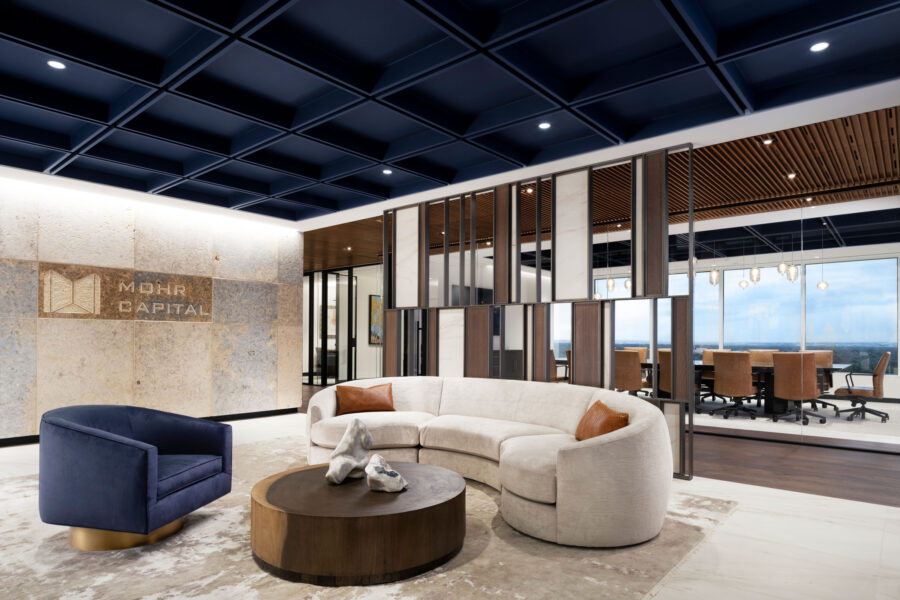
“Now carpet is something that enhances the design. There’s more of this organic form and seamlessness to the patterning. It’s more timeless and more sustainable too because it stays in the space. It doesn’t get dated quickly,” says Ariel Lumry of Perkins&Will. Photo by Casey Dunn
Bentley is seeing a lot of demand for “peekaboo color,” a specific use of color in a space that captures the idea that something can be colorful without being in your face. “It’s a more muted, sophisticated color, tucked beneath the neutral surface of a carpet,” deVuono says.
She says they’re also seeing continued demand for lighter tones that feel comforting and bring light into the space. “Everyone wants creamier and warmer colors right now,” deVuono says, noting that previously Bentley was known for its darker palettes. “It’s a big shift we’ve been seeing, and we’re taking the moody, edgy Bentley style and applying that level of depth to lighter tones.”
Endless Opportunity
- Bentley’s Classic Rock collection of LVT is seen here in Folk Rock. Classic Rock was inspired by the timeless look of terrazzo. The raw yet refined pattern grounds the luxury vinyl tile offering, which features foundational wood, stone, and concrete finishes. Photo courtesy of Bentley
- The Long Story Short collection is made of Bentley Premium Nylon and available with any of Bentley’s PVC-free backing systems. Photo courtesy of Bentley
Today’s carpeting really does enhance design, Lumry says. It offers a chance to soften and delineate space as well as provide acoustic benefit. “I can use it creatively, and it’s not limiting in its design.” deVuono says more workplaces want different areas of their offices to feel bespoke, too. “Diversity across spaces and a layer of complexity in designs are drawing people in more.”
But bright colors and harsh patterns have no place in today’s workplace design. Designers and clients alike are looking for styles that are timeless but exciting at the same time. “Coming out of the pandemic everybody wants to be embraced and feel comfortable. It may cycle back to brighter or bolder expressions. but right now it’s all about calming everything down a bit, which I think is interesting,” Lumry says.
We don’t have to compromise on design to make it affordable and sustainable.
And good design doesn’t have to break the bank. The gap has narrowed between what looks expensive and what actually is expensive. “The industry has done a much better job of providing materials and designing products with an approachable, achievable price point that don’t look cheap,” Lumry says. “We don’t have to compromise on design to make it affordable and sustainable.”
Bentley is currently working on expanding its Modern Curator collection, too, to include one style that uses a unique yarn process for a weathered look and another flooring option that looks almost painterly.
Standout Designs
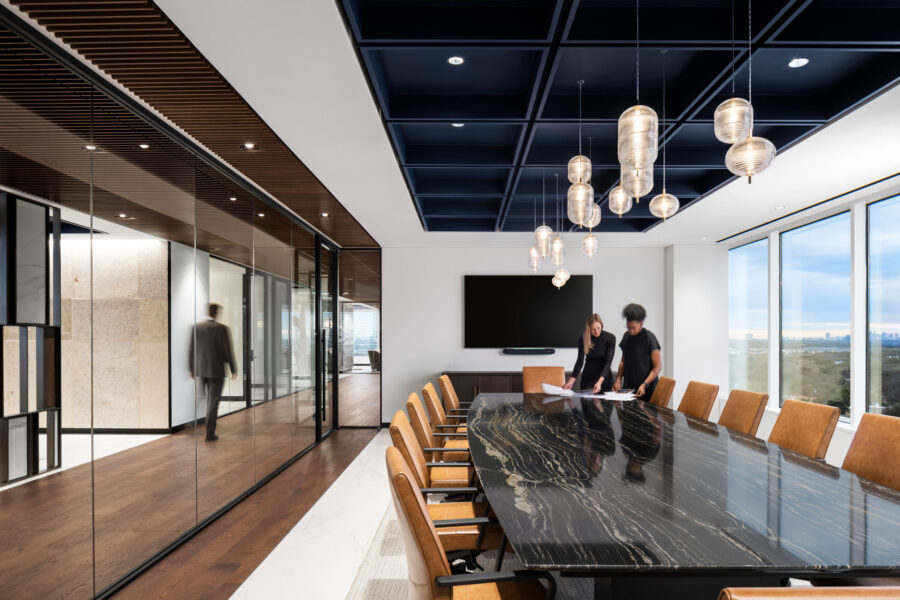
Perkins&Will says the design for Mohr Capital includes a carbon neutral surface solution that mimics the look of natural stone alongside wood flooring and carpet to soften the space. Photo by Casey Dunn
Perkins&Will completed a custom floor design for Mohr Capital in Dallas with designated zones using varied materials repeated strategically to indicate different areas. “We used transitions really thoughtfully to pull you into a different space. Nothing feels segregated, but everything has its own identity,” Lumry says.
The design includes a carbon neutral surface solution that mimics the look of natural stone alongside wood flooring and carpet to soften the space. “It was a very restricted material palette and very strategically implemented,” Lumry says.
Another project under construction now, Stonebriar Financial, also combines flooring materials like wood and carpet in organic patterns to create a comfortable but custom look that’s sustainable and easy to maintain. They’re also using concrete micro-topping. “I like to use different materials to set zones off and give a different feeling to each space. They still flow into each other,” Lumry says. That project is going after LEED Silver.
Today’s flooring options are much more exciting than years past, and the top manufacturers are really taking a cradle to cradle approach, which is vitally important to firms like Perkins&Will, Lumry says. And that emphasis on well-being and commitment to human-centric design is one way their firm makes sustainability exciting to clients. “It’s about creating a better environment for your employees—one they want to be in and come back to, and one they ultimately are more productive in.”

